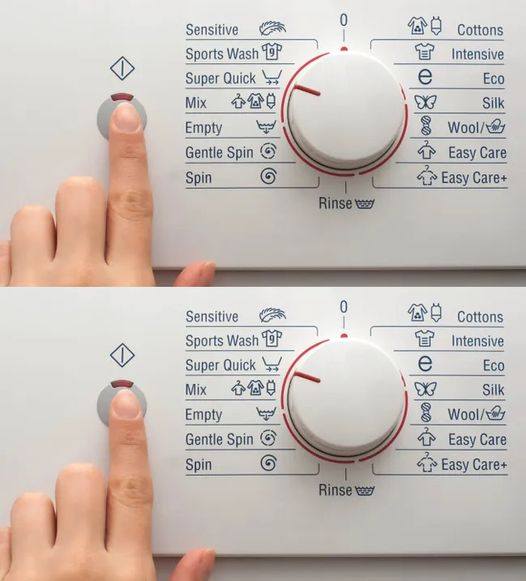ADVERTISEMENT
### What Is the Quick Wash Cycle?
Before diving into the reasons you should avoid the quick wash cycle, it’s important to understand what it is and how it works. The quick wash cycle is typically a faster version of the regular washing cycle, designed to clean clothes in a shorter amount of time. Depending on your washing machine model and the selected settings, a quick wash can last anywhere from 15 to 30 minutes, while traditional washing cycles usually last between 45 minutes to an hour.
While the quick wash cycle may vary between machines, the core idea behind it is simple: it uses shorter wash times, higher water temperatures, and faster spin speeds to achieve a faster cleaning process. The primary selling point is its speed, and it’s marketed as a time-saving feature for individuals with busy schedules or those needing to refresh lightly soiled clothing quickly.
However, the quick wash cycle may not always be as effective as traditional washes, and it can even harm your clothes or your washing machine in the long run. Below, we’ll take a closer look at the reasons why you should avoid this shortcut when it comes to cleaning your laundry.
### 1. **Ineffective Cleaning**
One of the main concerns with the quick wash cycle is that it doesn’t provide a deep clean. Washing clothes effectively is not just about speeding up the process; it’s about thoroughly removing dirt, grime, bacteria, and odors.
The quick wash cycle generally uses less water and detergent, which can limit its ability to clean clothes properly. Washing clothes with insufficient water or detergent means that dirt and grime may remain on the fabric, resulting in clothes that aren’t fully clean. The shorter washing time means that the detergent doesn’t have enough time to break down stains or thoroughly rinse out soap and detergent residue from the fabrics.
Even if you’ve pre-treated stains or heavily soiled items, the quick wash cycle may not give enough time for those products to work their magic. Therefore, you might find yourself needing to wash clothes again, essentially doubling the load and wasting more time and resources in the process.
### 2. **Inadequate Rinsing**
The rinse cycle in a regular wash program is designed to remove excess detergent, dirt, and residues from clothing. However, quick wash cycles often have shortened or less effective rinsing phases. This can leave detergent residues on the fabric, causing irritation to your skin, especially if you have sensitive skin or allergies. Detergent build-up can also cause your clothes to feel stiff or sticky.
Additionally, residue left behind can contribute to the buildup in your washing machine itself, eventually leading to performance issues or unpleasant smells. The combination of detergent and sweat, body oils, and environmental contaminants can create a breeding ground for bacteria and mold inside the machine, making it more difficult to clean your laundry over time.
### 3. **Higher Energy Consumption Over Time**
While it might seem like the quick wash cycle is more energy-efficient because of its shorter time, the opposite can sometimes be true. A typical quick wash cycle uses a high spin speed to minimize drying time. This faster spin cycle requires more energy to operate, especially if your machine isn’t designed to handle it efficiently. Over time, opting for the quick wash cycle more frequently can lead to higher energy consumption and increased utility bills.
In addition, as quick wash cycles tend to use hotter water temperatures to compensate for the shorter wash time, the overall energy cost may rise as well. Hot water is more energy-intensive to produce, meaning that the convenience of a short wash may come with a higher environmental footprint than you expect.
For Complete Cooking STEPS Please Head On Over To Next Page Or Open button (>) and don’t forget to SHARE with your Facebook friends
